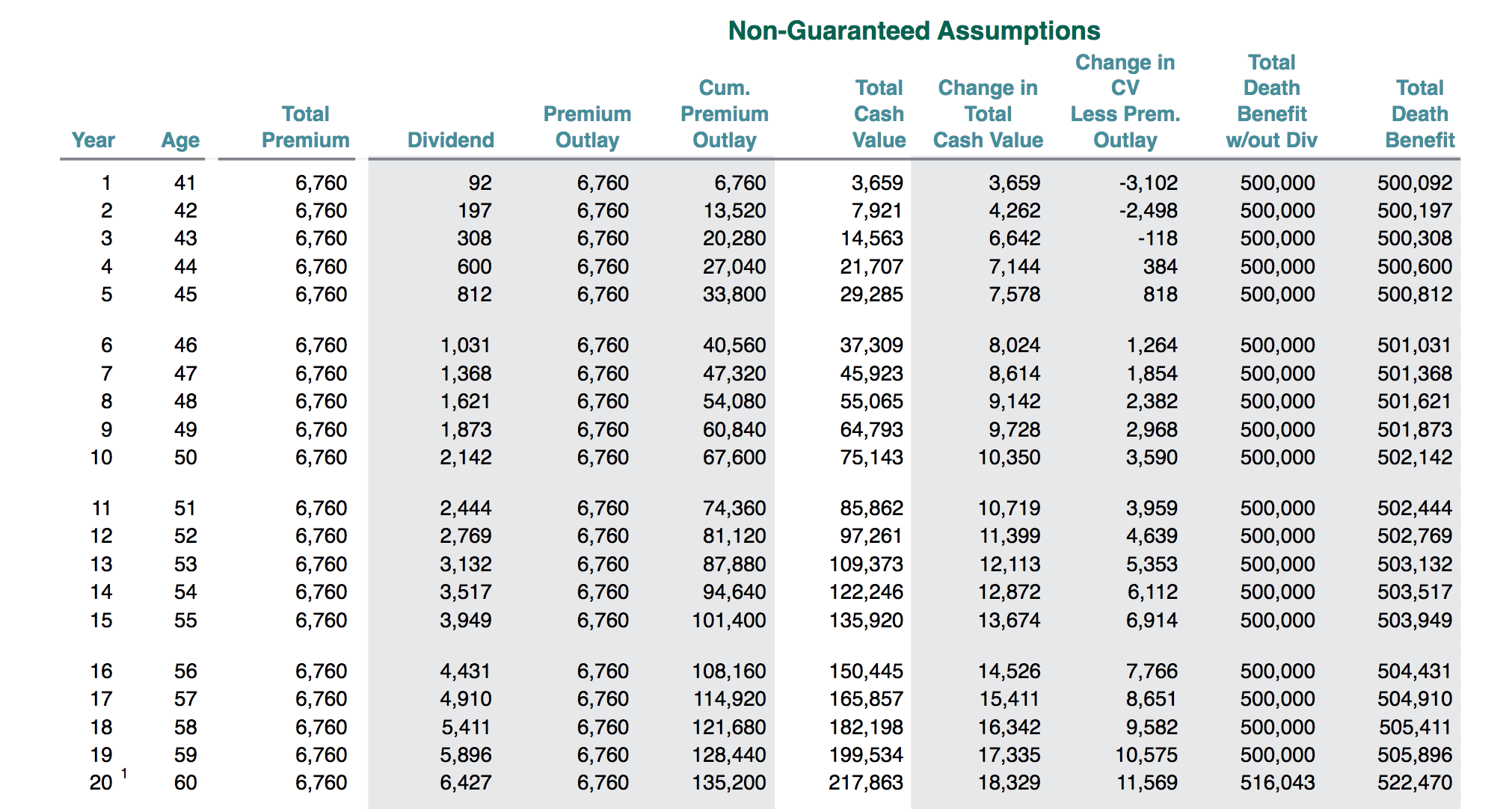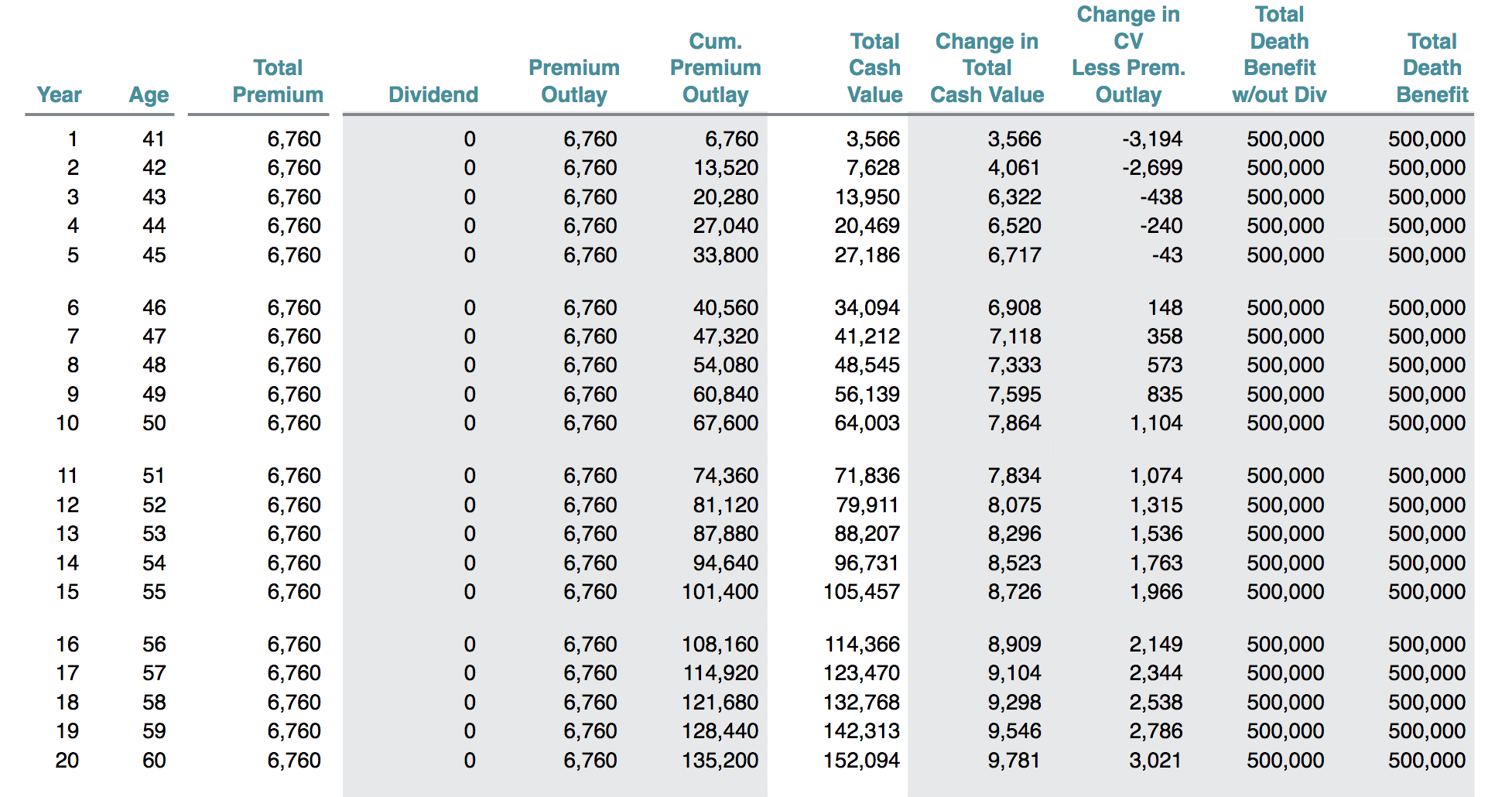In April of 2015, Consumer Reports published a report on life insurance titled: Is Whole Life Insurance Right for You? The report used the subtitle: Follow our Advice to Assess this Most Misunderstood Coverage. I'll get right to the punchline, Consumer Reports recommended against whole life insurance. That fact is not surprising. Nor is it a surprise that several financial bloggers use the Consumer Reports article as supporting evidence for a whole life slam piece.
What is surprising is just how laughably wrong the argument Consumer Reports makes.
Term Life Insurance is Cheaper
Stop me if you've heard this one already...
Turns out that term life insurance is cheaper than whole life insurance. I know I'll give you a few minutes to wrap your head around that one as it's quite strikingly new news to me, too.
When I say cheaper I mean cheaper. I mean the premium you pay on a month-to-month basis or year-to-year basis is less-ish than you'll pay for a whole life policy with the same death benefit (at least during the the guaranteed level premium period...that's where they get you).
So all you need to do, Consumer Reports states, is take the difference in premium between what you'd pay for whole life insurance and what you do pay for term life insurance and...get this...invest the difference!
Invest in what exactly? Stocks? No no no no. The staff writer at Consumer Reports, much like a broken clock, got at least one thing right. Whole life insurance doesn't have a risk profile similar to stocks, and as such it doesn't make sense to compare the two. Instead, the recommended investment for your difference was 10-year treasuries.
Why 10-year Treasuries?
According to the Consumer Reports article, 10-year treasuries are:
a comparable alternative to investing in whole life, in terms of liquidity, risk, and resulting returns
Now, I have a pretty deep understanding of insurance and financial markets as a whole. I'm well versed in the theoretical and practical implications of investing in a whole host of possible investment vehicles and I know well the considerations one must make when investing in debt. The 10-year treasury and whole life insurance are no where near each other in terms of liquidity. One requires an unknown willing purchaser to clear the trade, the other has a massive asset manager's contractual promise to effectively "clear the trade" when you want money.
Let's dive a little deeper, though, and look at risk and rate of return expectations.
Using the prevailing interest rates quotes at the time of the article of 2.17% yield on the 10-year (more on that in a bit) I get a 20 year cash balance on investing in 10-year treasuries of $151,693. This assumes that you'll reinvest the principal of the bond each time it matures and you will include the bond income in that reinvestment at maturity. How does this compare to whole life insurance?
Looking at a whole life policy designed the way I would sell it at a $500,000 death benefit and using the premium amount from Consumer Reports the guaranteed cash value at year 20 is $152,094 the projected cash value (i.e. with dividends) is $217,863. Consumer Reports wanted to make the comparison to guaranteed cash value in a whole life policy and as you can see the figures are close. There's less than a $500 difference between the projected balance achieved by investing in treasuries and the guaranteed cash value in the whole life insurance policy.
Whole Life Policy with Dividends
Whole Life Insurance without Dividends
This is where we might declare Consumer Reports methodology reasonable. But to do that also requires either a seriously misconstrued understanding of whole life insurance or a deep desire to mislead.
Dividends aren't Guaranteed
The Consumer Reports article does note very casually that whole life policies can earn dividends, but these dividends aren't guaranteed. The insinuation is that it could happen, but it doesn't necessarily always happen. I challenge Consumer Reports (or anyone) to name one life insurer presently engaged in the issuance of dividend paying whole life insurance that didn't pay a dividend to policyholders in the past 100 years. Spoiler alert, none exist.
The flippant nature in which the article discusses dividends isn't technically incorrect, but is wildly askew in how it portrays reality.
But what's in a Guarantee?
Looking at the whole life insurance illustration ledger and comparing those projections to an investment in treasuries and then declaring the two similar in terms of risk profile and expected rate of return displays a colossal knowledge gap for both whole life insurance and treasuries.
Here's something I've always found amazing about whole life insurance. When the insurance company issues the policy, they are guaranteeing the cash value accumulation rate forever and always. That timeline can cover many decades. There is no financial instrument I'm aware of that offers as high a guaranteed rate of return for as long as whole life insurance. The rate cannot change and if results at the life insurer are better than the guarantee assumed the insurer pays policyholders a dividend (extremely likely).
At the time the Consumer Reports article published, 10-year treasury yields were 2.17%. That's why the article used that figure as a basis for calculating a hypothetical investment to compare against whole life insurance. We're now just over four years later and what is the current yield on 10-year treasures? 1.87%. Treasuries can and do change every single day. Whole life guaranteed rates never change for an existing policy.
So that investment in treasuries that Consumer Reports suggested would be roughly the same as whole life insurance is now declining because you can't earn as much on treasuries as you could in 2015. Whole life insurance policy holders, on the other hand, receive the same guaranteed rate of accumulation today that they did in 2015.
In addition, you should now that anytime a dividend does happen, it permanently increases the future guaranteed cash accumulation you will achieve on a whole life policy.
Here's the final point to but a bow on this risk profile and expected rate of return aspect of the discussion. Neither option subjects you to the risk of losing your principal. But one option (whole life insurance) can clearly identify your worse case scenario, which is extremely unlikely to unfold. The other option (treasuries) is much trickier to gauge the worst case scenario and it's actually quite likely that results could be less favorable than originally assumed.
The Argument is Lazy
We've compared whole life insurance against a myriad of savings and investment options. When we select an alternative, we try to find the best example of it in order to give it the best show to highlight its strengths. A lot of the comparisons made against whole life insurance, like this one from Consumer Reports, seeks out the worst example of whole life insurance to declare it a dog against your other options.
This would be like us stating that mutual fund were bad because they have 8% load fees and 2% 12b-1 fees. Fees on mutual funds haven't been that high in over a decade, and several options exist with far lower fees. We don't do that. We find it very disingenuous.
I'm not sure if these lazy arguments are done with an intention to mislead or if they are simply evidence of a shallow knowledge base. In either case, the damage done is still real. And anyone who wants to profess expertise on a subject to the degree that he/she writes an article in a major publication such as Consumer Reports ought to have, at a minimum, the understanding of real world application and a willingness to stress test your hypothesis.
Tired of Taking Insurance Advice from Novices?
We have a several decades of experience advising people and helping them make informed decisions about life insurance.




Can you try that comparison with S&P etf? It will blow the whole life to smithereens.
Also, what happens when the company goes belly up? DOI guarantees only 100k. With Index etf , you atleast will have 1000 or 10000 shares even though their value maybe cut off 90% and you can happily live writing call options on them.
Steve,
I should hope that an investment in an S&P ETF out performs the 20 year cash accumulation results on a whole life policy. If not, what’s the point of the ETF?
I will say that I think “blow it to smithereens” is very likely hyperbole on your part.
Your comment about the insurer going belly up almost appears to assume that this is a high likelihood. I can think of fewer than five major life insurers engaged in issuing permanent life insurance in any major fashion that have gone insolvent in the past 50 years. And all of those incidences took place prior to the current establish regulator guidelines that exists today. Nothing is truly risk free, and nothing in this article was written to suggest such.
I don’t see how writing derivatives against shares you own in an ETF acts as any greater protection from loss. I’ll also point out that executing derivative trades is far more complex than purchasing whole life insurance and in my experience the majority of people who advocate options strategies are speaking from a theoretical point of view versus an empirical one.
Thanks for the great post!
The way you determine your rate of return on treasuries is incorrect as you fail to capture roll yield. A significant driver of fixed income returns over the past 20 years. You also fail to capture capital appreciation of the asset. An unskilled manager may manage in this manner but a purchase of a simple mutual fund would account for thus. An example would be WHOSX which offers a 5 year return greater than 5% despite the fact interest rates have been nowhere close to that over the last 5 years and the return since inception has been greater than 7%. Finally it is important to point out that life insurance dividends don’t come out of thin air and the strongest driver of the dividend is the return on the insurance companies portfolio of assets. Insurance companies would be invested in the same markets as everyone else. So, in your example of using declining interest rates to show a lower investment return. Wouldn’t the insurance company be participating in the same declining rates in their portfolio as well ?
Hi Ryan,
While I certainly understand that one could employ a “roll down” (not a roll yield that’s a futures trading strategy), that’s a much more sophisticated bond trading strategy–far more complicated than buying life insurance. Yes a mutual fund could employ that strategy for someone and that might result in higher returns, but this also comes with a higher degree of principal risk.
WHOSX is a long duration Treasury Fund. The average duration of a US Treasury held in that fund is more than twice the duration assumed if we are talking 10 year Treasuries. It’s not all that shocking that the fund is up considerably over the past five years as interest rates did drop and therefore bond par values go up.
Your question about dividends entirely misses the point that Consumer Reports originally made and my additional point. The comparison made by Consumer Reports was guaranteed whole life values versus a simple 10 year Treasury investment. My point was that the two are similar, but that dividends would almost certainly push whole life considerably ahead. Consumer Reports casual suggestion that dividends weren’t guaranteed (almost as if they didn’t matter to the discussion) was silly because it wandered so far outside of how whole life policies traditionally work.